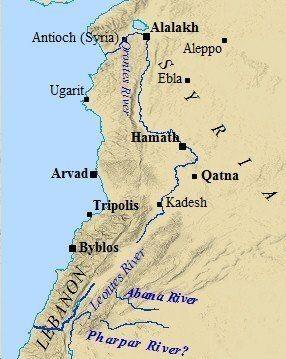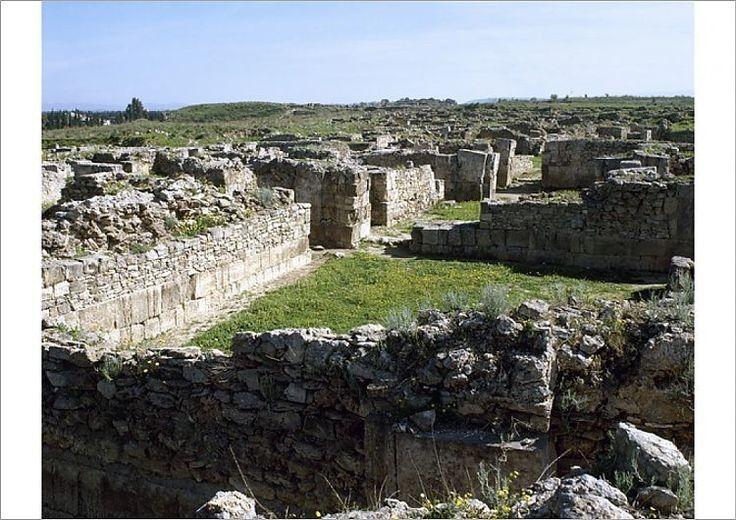
French archaeologists discovered thousands of clay tablets in 1929 in the newly discovered city of Ugarit, one of the oldest trade city-states of the Eastern Mediterranean, the heyday of which falls on the second millennium BC. This discovery, which shocked archaeologists, unveiled the mystery of ancient Canaanite history, culture, and religion, about which almost nothing had been known, with the exception of rather fragmented information that reached us in the texts of the Old Testament, as well as in fragments of the works of Philo of Byblos.
These discoveries sparked great interest among biblical scholars, because ancient Jews and Canaanites belonged to related linguistic groups (Ancient Hebrew is a dialect of South Canaan), and ancient Israelites were subject to strong cultural, political, and religious influences from more civilized Canaanite city-states. One proof of this claim is the fact that prior to the Babylonian captivity, the Hebrew script used the Canaanite alphabet. This is understandable because the Jews who came to Palestine were an uneducated nomadic people, while Ugarit had its own water supply and sewerage system and a more developed ancient culture. The decoding and analysis of the found Ugaritic tablets revealed many similarities and dependencies between these texts and the Bible, which allowed biblical researchers to better understand some of the literary and semantic problems of the biblical text. Here are some examples of such literary influences of Ugarit on the text of the Old Testament.
The Liver as a Symbol of the Senses

One example of the linguistic influence of Canaanite literature is Genesis 49:6. O my soul, come not thou into their secret; unto their assembly, mine honor, be not thou united. This verse contains a synonymic parallelism, but the meaning of the words mine honor, be not thou united are unclear. After the discovery of the Ugaritic texts, it becomes evident that instead of the word כביד (honor), the word כבד (liver) had originally been used. Liver, as well as the heart, was considered the dwelling place of feelings. This is confirmed by the works of the famous Orientalist and Doctor of History Ilya Shifman, who translated the discovered Ugaritic texts: “Ilu chuckled in his heart and laughed in his liver” (O Ba’lu. Ugaritic Poetical Narratives). The Septuagint can also be cited in favor of this understanding, whose translators also saw liver, not honor, in Genesis 49:6, and we know that the Septuagint has always been the principal translation of the Bible for the Orthodox Church.
Is Psalm 29 a Creative Reworking of a Ugaritic Hymn?
The biblical authors also borrowed genres and literary styles from Ugarit. Judging from the analysis of the Biblical Psalms and the found Ugaritic hymns, we can conclude that these Canaanite hymns were known to ancient Hebrew authors, who took their images and style as a basis and applied them to the religion of the God of Israel. Psalm 29 is a vivid example of such cultural borrowing. The protagonist in the Ugarit prototype of Psalm 28 was Baal, the god of thunderstorms and tempest, whose attributes the author of the Psalm transferred from a pagan deity to the true God Yahweh. Yahweh is represented as a formidable God: The voice of the Lord is upon the waters: the God of glory thundereth (Psalm 29:3); His voice makes the earth shake: The voice of the Lord breaketh the cedars; yea, the Lord breaketh the cedars of Lebanon (Psalm 29:5), The voice of the Lord shaketh the wilderness; the Lord shaketh the wilderness of Kadesh (Psalm 29:8). God of Israel is represented as the Lord of storms and lightning: The voice of the Lord divideth the flames of fire (Psalm 29:7). Psalm 29 is not the only Psalm where some Canaanite images describing Baal are applied to the true God. Thus, Ugaritic texts call Baal “riding on the clouds” (O Ba’lu. Ugaritic Poetical Narratives), because one of his functions was to send down rain. This description is applied more than once by the prophets to the God of Israel, who maketh the clouds his chariot: who walketh upon the wings of the wind (see Psalm 68:33; 104:3; 18:10).
God and Leviathan
There are parallels between Ugaritic texts and books of the prophets. In that day the Lord with his sore and great and strong sword shall punish leviathan the piercing serpent, even leviathan that crooked serpent; and he shall slay the dragon that is in the sea (Isaiah 27:1). Where did the Prophet Isaiah get these images from? It was previously unknown, but with the discovery of the Ugarit texts, the answer to this question has been found. The people of Ugarit believed that the god Baal struggled with the god of the sea Yam, depicted as a sea snake: “You smote Leviathan, the dodgy serpent, you have destroyed the twisting serpent cursed with seven heads” (O Ba’lu. Ugaritic Poetical Narratives). The Canaanites deified the sea, the Jews did not, but it is also worth noting that in Hebrew the word ים (yam) means “sea”.

So, excavations in Ugarit have convincingly shown a strong connection between the texts of the Bible and the Canaanite culture. We now know that the Old Testament prophets and other authors of biblical texts were well acquainted with Ugaritic mythological literature and widely used various descriptions, metaphors, comparisons, images, and other stylistic techniques, but retained their ideas, their beliefs, and their faith in God Yahweh, adhering to pure biblical monotheism. Biblical archaeology helps anyone interested in Scripture to better understand the difficult passages of the Old Testament, as well as the religious and cultural context in which the message of the prophets of Israel about the One God was heard.



